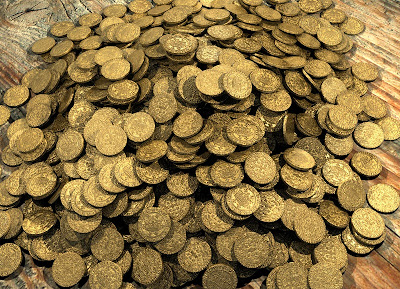Different Cultures in Different Places.
My message in a bottle
Travels round the sea.
Its journey is meant
To reach you and me.
Listen to my song of dreams
Where my world truly begin!
Clouds of dreams painted in the sky
Paved the way for my spirit to climb high...
My message in a bottle
Travels round the sea.
Its journey is meant
To reach you and me.
Listen to my song of dreams
Where my world truly begin!
Clouds of dreams painted in the sky
Paved the way for my spirit to climb high...
Have you ever wondered how would it be like to live in a paradise island?... Yes, I have.
I am really infatuated with paradise islands in the turquoise sea with pristine sandy beaches.
I read many stories throughout my lifetime about Treasure Islands where Pirates hid their Golden Treasures, Precious Stones, Gold, Jewels, and Real Gems.
But, they might have been only Tales and Old Legends far from truth. Have they??...
My dear grandfather (1883-1973), the father of my father and my three aunts, was a great story-teller and knew History of the World very well. We used to gather round the table having a cup of afternoon tea, and listening to grandpa's stories with lovely music in the background. My Concertist aunt played the Piano so beautifully in all our family gatherings, making reunions a memorable experience.
One day, my dad, mom and I joined together in my grandfather's home on a Holiday well-known worldwide -as the Day of the Human Race, which meant the celebration of Columbus Day when he discovered America.
My granddaddy told us that there was NOT such a thing. Columbus discovered NOTHING, because there were many people already living in the Continent of America. Unfortunately, they became forgotten. For instance, the Bahamas Islands were inhabited by indigenous tribes called Lucayans who spoke their own language. My family and I wondered how Columbus communicated with them, since the conquerors spoke a European language.
Later on, Columbus brought back a group of Lucayans to Europe, in order to study what kind of culture they had. The Lucayans were the original inhabitants of the Bahamas before the arrival of Europeans. They were a branch of The Tainos who inhabited most of the Caribbean Islands at the time. My dear grandfather told us -sadly- many stories about the exploitation of the labor of slaves, men, women and children, who were treated as property. The Europeans conquerors also imported people from Africa to make them slaves to work for free in America. Shame on those folks who did evil things! That was indeed, very sad!...
My grandfather was a good man with a big heart. I still love and miss him a great deal.
Columbus first arrived in a major island in the Caribbean Sea; he called it Hispaniola. Today, it contains the two sovereign States of the Dominican Republic and Haiti.
Columbus founded a settlement there, which became the first permanent European settlement in the Americas. The island was inhabited by The Taino, one of the indigenous ARAWAC people who also populated part of South America Rainforest along with other indigenous tribes.
The Taino population was rapidly decimated. The natives had no immunity to European diseases, and entire tribes were destroyed. 14,000 Arawacs were left by 1517 from 250,000 in 1492.
Can you imagine this sort of permanent extinction of natural environments?...
By the early 17th Century, the island and its neighbor islands in the Caribbean Sea became regular stopping points for Caribbean Pirates. So, English, French and Dutch Pirates established their own bases in more isolated places. As time went on, and History provided its own evidence, vast territories were conquered and shared among European countries, which actually invaded many lands round the world, and new settlements filled our common home, Planet Earth.
Geography: Cuba, Hispaniola, Jamaica, and Puerto Rico are known as the Greater Antilles. The Greater Antilles are made up of continental rock, as distinct from the Lesser Antilles, which are mostly young volcanic or coral reef islands.
Fauna: The Rhinoceros Iguana is a threatened species of lizard (in Taxonomy) in the family Iguanidae found on the Caribbean Island of Hispaniola, shared by Haiti and Dominicana
today.
There could also be found the painted turtle, which is the most widespread native turtle of North America. It also holds a conservation status of threatened species in the Phylum of Chordata.
Fossils show the painted turtle existed 15 million years ago, and evolved during the Last Ice Age into 4 regionally subspecies.
There are also a large number of American Crocodiles, which are found in these lands, and have instilled fear among the local community. They usually achieve a length between 4 metres (13 feet) through 7 metres (23 feet) long specimens. Smalller alligators and big snakes of all kinds are also found all over Florida, especially in THE EVERGLADES.
BE CAREFUL!!
HAVE A BLESSED TIME!!
UNTIL WE WRITE AGAIN.
POET STARRY DAWN.












,+WHEN+COLUMBUS+ARRIVED..jpg)













2 comments:
I love all that information!
Thank you, dear friend, Sandie for coming over and offering your wise evaluation of my essay-lesson!
Cordially,
Starry.
Post a Comment